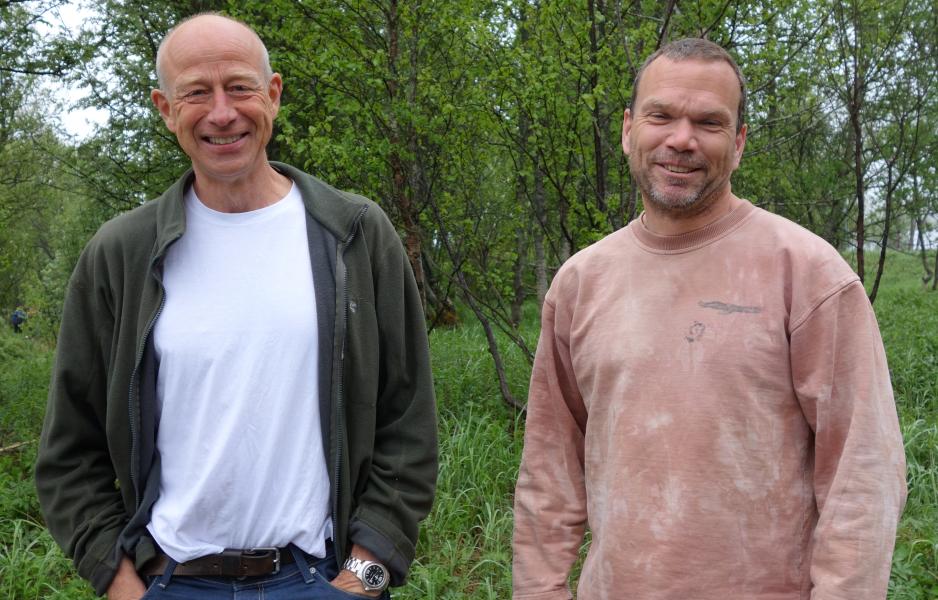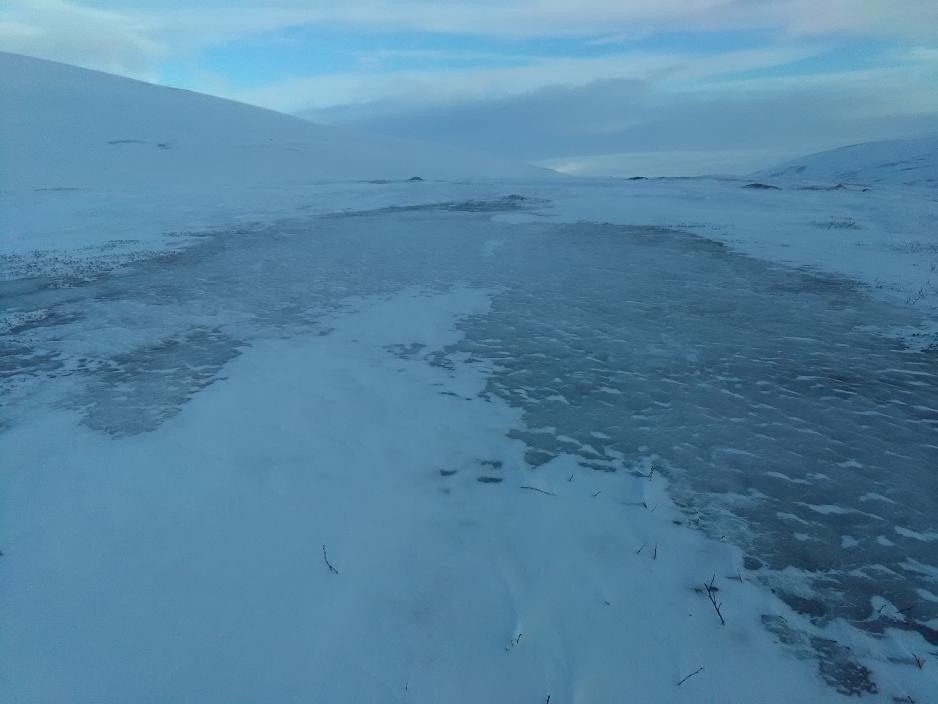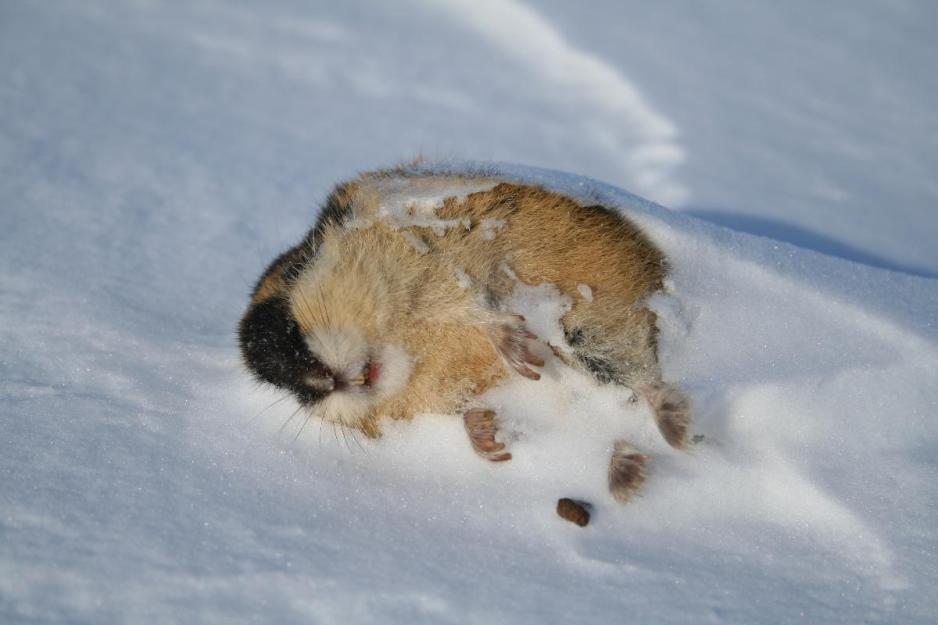“The Arctic Climate Disappears”

Biology Professors Rolf Imas and Nigel Yoccoz at UiT Norway’s Arctic University have for years conducted research on how climate changes affect the ecosystem in the Arctic. (Photo: Ellen Kathrine Bludd/UiT)
What decades ago would the odd poor winter up north has become the new normal. “The future Arctic will not be the Arctic we know today”, say climate researchers at the University of Tromsø.
The prognosis comes from Rolf Imas and Nigel Yoccoz, both Ecology Professors at UiT Norway’s Arctic University in Tromsø. Together they have conducted research for decades into the effects of climate changes on ecosystems in the Arctic. However, what they observe now is more extreme than expected.
So, what is really happening to the climate in the High North now?
“These are the parts of the Norwegian governance area in which climate warming happens the fastest. The development of the average temperature is more or less as expected, i.e. in keeping with climate model prognoses. What is surprising, however, is that the variation around the average is as large as it is”, Ims says.
Browner and drier
The researchers now observe extremely high temperatures during some seasons, such as Svalbard in May. For the ecosystems, such extreme feats may have larger consequences than a gradual development of the average.
The professor says that the Arctic is growing browner and drier, and that this is something they see increasingly more of in both mountain areas as well as the northern coniferous forest. The unusual mild weather makes ever-green plants wake up from their hibernation and thus lose their tolerance for cold temperatures, which they have previously developed, and die when the cold sets in.
“We see this many places in the Arctic. not everything gets greener when the climate gets warmer; some things get browner. Everywhere, the climate will be strange”, Rolf Ims says.
One brutal consequence of climate changes may be that reindeer starve to death because hard snow and ice make their feed unavailable for them, as a consequence of unstable winters with thaw, rain, and re-freezing of the ground. (Photo: Geir Vie)
No more permafrost
A warmer climate leads to thawing permafrost which, in turn, leads to draught as the meltwater evaporates in mild weather.
“We have seen more draught and fires in recent years, amongst others major fire outbreaks on the tundra in both Alaska and Greenland”, Professor Nigel Yoccoz explains.
So, what really happens when there is no permafrost?
Northern boreal forests and the Arctic are famous for being low-precipitation areas. When water disappears from the earth because of thawing permafrost on the tundra occurring at the same time as evaporation increases, there may be desertification.
Natural carbon capturing
“The permafrost is important for the water content in the ground. It keeps water from being drained down in the ground and thus, the tundra vegetation and boreal forest do not dry out. There is very little precipitation many places in the High North. With no permafrost and higher evaporation in a warmer climate, these low-precipitation ecosystems would end up with desert-like environmental conditions”, Ims says.
We already see profound effects on the fauna
The permafrost also binds large amounts of carbon in the ice, so that it does not transform into climate gases. Thawing permafrost also causes erosion and major infrastructure problems many places in the Arctic.
“The coast areas are likely to grow wetter, while dry areas grow drier as more liquid evaporates”, Yoccoz expands, saying that the precipitation prognoses for climate change are more uncertain than temperature prognoses.
For instance, one is not quite sure where precipitation will fall.
Early warning
Much of Ims’ and Yoccoz’ research is conducted in Finnmark, Norway.
There, they run the COAT project, Climate-ecological Observation System for the Arctic Tundra. The goal of the project is to provide reliable documentation and early warning about effects of climate changes on biological diversity, natural resources, and ecosystem processes in the Norwegian Arctic. This is, in turn, to provide a solid foundation for good management and climate change adaption.
“We already see profound effects on animal life, that climate changes significantly alter the ecosystem. It is particularly damaging for the animals living in and on snow and ice”, says Rolf Ims, COAT Project Manager.

Rolf Ims and Nigel Yoccoz tell about difficult conditions in the Arctic winter, when ice covers the feeding ground and animals cannot find food. Here, ice-coated tundra on the Varanger Peninsula. (Photo: Jan Erik Knutsen)
Extreme winters
“As the Arctic sea ice withdraws, ecosystems related to sea ice are in trouble, from the smallest to the largest living beings. On land, we see that animals that depend on digging through the snow, such as small rodents and of course also reindeer, end up in problems”, he says.
Ims and Yoccoz tell about extreme winters with hard snow and challenging feeding conditions.
“This [previous] winter was very hard on the reindeer herding industry. As early as in November, there were reports of crisis in Finnmark, which much ice and hardened snow. It is unusual for a poor winter to start that early. It is an economic crisis, and a crisis for the animals. They must be fed all throughout the winter”, Ims says.
This happens more frequently than before. Now, almost every winter is a poor winter.
Species lost
“Smaller herbivores are also negatively affected by their feeding grounds more frequently being unavailable under hard snow and ice. In particular lemmings, which are a key species in many Arctic food chains”, Ims says.
The Arctic climate is disappearing
He explains that the lapse of the so-called typical lemming years have negative effects on both Arctic predators having lemmings on their diet as well as for Arctic plants stimulated by the gnawing and fertilization of this rodent.
So the reindeer may simply disappear?
“Just like other Northern species, the reindeer are adapted to a cold climate. The ongoing climate changes and in particular increased frequency of mild-weather winters with hard snow and ice on feeding grounds lead to significant production losses for reindeer herders. In a longer-term perspective, the entire ecosystem is changed so that the reindeer loses its most important feeding plants”, Ims says.
It will most likely face new competitors chasing its food, as well as parasites, migrating in from the south. Other grazing animals than reindeer may in a long-term perspective provide a better foundation for nature-based industries many places in the Arctic.
Spreading out
“Our part of the Arctic is relatively mild, and there are often thaw-freeze winters now and then. However, it never happened before in Siberia. Now, we see it there too”, Yoccoz says.
This confirms that the Atlantic climate of Northern Norway now also spreads east and north.
“The Arctic climate is disappearing”, Nigel Yoccoz says.

Herbivores are negatively affected by their grazing grounds more frequently being locked in by hard snow and ice. This also applies to small rodents. It appears that it is in particular lemmings, a key species in many Arctic food chains, that are hard hit. (Photo: Rolf Anker Ims)
Crisis for the indigenous population
The researchers say that in the winter of 2013, there was a crisis on the Yamal Peninsula in Siberia, where indigenous people are reindeer herders. There are some 70,000 domesticized reineer in Yamal.
"For the first time, hard rain fell on the snow mid-winter, followed by low temperatures. This happened across large areas. It was as if the entire Northern Scandinavia was covered in ice”, Rolf Ims says.
The inhabitants of Yamal have little capacity to feed their reindeer and finding food is hard.
“It ended up with tens of thousands of reindeer dying.”
Preparedness too poor
There have also been problems in Norway related to feeding of reindeer. The professors say that up until now, there has been poor preparedness for this in Norway, and feeding reindeer is also logistically no easy feat. Nor can you feed the animals with whatever you want.
Climate changes in the Arctic are clearly a crisis announced
What should the state do?
“Climate changes in the Arctic are clearly a crisis announced, and also how it affects reindeer herding. Both industries as well as governance offices generally demonstrate a lack of ability to establish good preparedness for announced crises, be they pandemics or climate changes. Researchers may warn about crises for years. However, it is only when things start happening that the authorities respond”, Ims says.
It is all about having warning systems, plans, and resources available to allow one to act fast when a crisis occurs, and so that the effects of various measures are continually assessed.
Lacking funding
“From the side of research, we have worked for a long time to establish the climate-ecological observation system COAT, which may contribute to better management tools both for reindeer herders as well as for other nature values in the Norwegian part of the Arctic. The infrastructure of this observation system will be in place this year, yet it appears hard to find the funding to operate it”, Ims says.
However, even if scientists have announced the climate crisis for years, the changes are more extreme than expected.
“Svalbard has beaten all records for the month of May. And it can go either way; high temperatures, cold and precipitation. The variation is greater than expected. And climate researchers are surprised that these extremes appear so soon”, he explains.
More extreme than expected
Climate change is mostly measured by global average temperature, which applies to all climate goals. Yet variation and extremes are also important.
In a worst-case scenario, one single extreme incident may tip the balance of the entire ecosystem.
“How extreme is extreme? What we can say, is that the extreme we see now is more extreme than expected”, Rolf Ims says.
He tells us that a report recently was published about the consequences climate changes have on the forest in Norway.
Here, scientists conclude that new extremes in the form of draught, storms and major temperature swings throughout the year will have larger negative effect on the forest’s ability to store carbon, produce wood, and host biological diversity, than do changes to the average temperature.
“In a worst-case scenario, one single extreme incident may tip the balance of the entire ecosystem”, Ims says.
Species replaced
It may be gloom and doom for Arctic species and ecosystems.
“Viewing some changes as negative often depends on values. We may lose Arctic species but gain other species, so-called boreal species, that are not necessarily bad in an of themselves”, Nigel Yoccoz says.
However, he adds, there is little doubt that what we are going through now is bad for reindeer herding and for the Sami culture.
Different flora and fauna
“But if you love the deep woods, climate changes may be good. In a longer-term perspective, there will be more trees and bush here in the North”, Yoccoz says.
“However, finding a bright spot for Arctic species and ecosystems is hard. They will gradually be displaced across vast areas, even with the most moderate climate prognoses. And extreme incidents are not good for anything” Rolf Ims says.
However, he stresses that there will still be animals and plants and that in a longer-term perspective, ecosystems will be established that may be somewhat functional in a new climate.
We may lose Arctic species, but get other species instead
Too late to turn around
Is there anything we can do to turn this development around?
“The development we observe now is the consequence of the amount of greenhouse gases that have already been emitted to the atmosphere. It is too late to do anything about that. In a longer-term perspective, the development will – as is generally known – depend on whether the world manages to meet the UN targets about emission reduction and, if possible, use various measures to cleanse the atmosphere of CO2 already emitted”, Ims says.
Such measures are key, yet it will take time before the world sees any effects.
“Nevertheless, it is very uncertain what the ecosystems will look like, other than that they will be quite different from what we see now”, Professor Rolf Ims says in closing.
Climate changes and influences
COAT data show that through the past three decades, average annual temperature and precipitation data have shown a significant deviation from the 1961-1990 normal. On the Varanger Peninsula, there has only been one year since 1989 that has been colder than normal. Average annual precipitation has also deviated from the normal for most of the years since 1990, with more precipitation in particular in summer.
The duration and maximum snow depth of the snow season have declined in later years, in particular in the month of May.
The most extensive ecological effect of climate changes in Varanger so far is the spreading of a small umber. The outbreaks of this small insect have caused widespread damage to forest foliage as well as large areas of dead birch forest. In addition, there has been extensive changes in vegetation in the entire forest tundra ecozone.
Climate changes have also proven to contribute to unregular lemming cycles with muted lemming outbreaks. This has led to a decrease in predators depending on lemmings. Some of these, such as mountain foxes, are currently on the Norwegian red-list for endangered species.
Also read
This article was originally published in Norwegian and has been translated by Elisabeth Bergquist.




